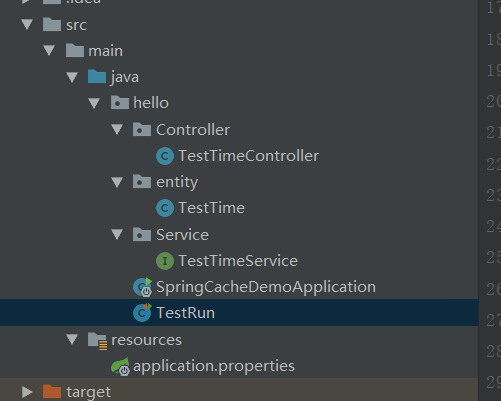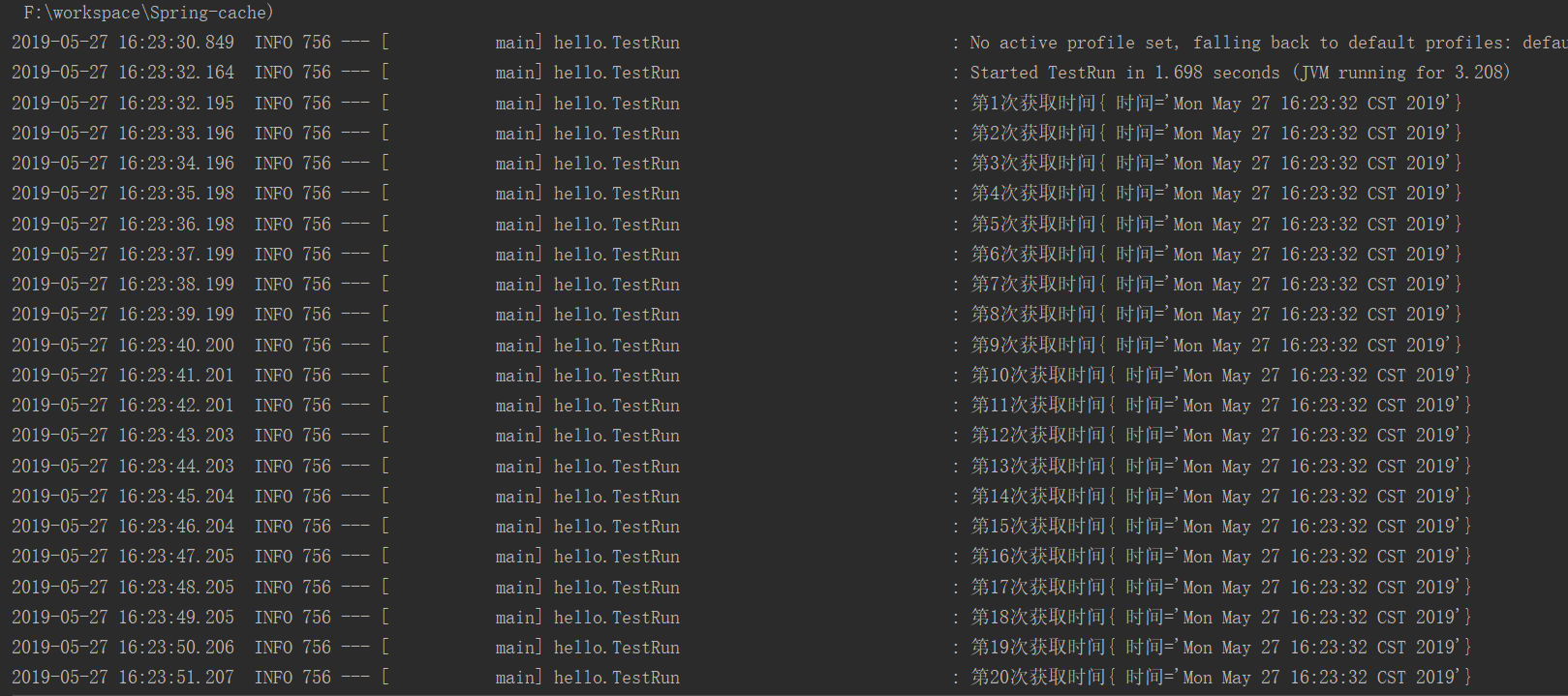今天尝试了一下springboot集成springcache做缓存,springcache是基于annotation(注释)的一个缓存技术
特点总结如下:
- 通过少量的配置 annotation 注释即可使得既有代码支持缓存
- 支持开箱即用 Out-Of-The-Box,即不用安装和部署额外第三方组件即可使用缓存
- 支持 Spring Express Language,能使用对象的任何属性或者方法来定义缓存的 key 和 condition
- 支持 AspectJ,并通过其实现任何方法的缓存支持
- 支持自定义 key 和自定义缓存管理者,具有相当的灵活性和扩展性
使用起来也非常的简单
第一步:添加maven依赖
<dependency>
<groupId>org.springframework.boot</groupId>
<artifactId>spring-boot-starter-cache</artifactId>
</dependency>
第二步:新建一个TestTime类
import java.util.Date; public class TestTime { private Date time; public TestTime(Date time){ this.time=time; } public Date getTime() { return time; } public void setTime(Date time) { this.time = time; } @Override public String toString() { return "{ 时间='" + time + '\'' + '}'; } }
第三步,再添加一个TestTime接口
import hello.entity.TestTime; public interface TestTimeService { TestTime getTestTime(); }
第四步,到主函数添加:
@EnableCaching
开启缓存,这个非常重要
第五步,实现该接口:
import hello.Service.TestTimeService; import hello.entity.TestTime; import org.springframework.cache.annotation.Cacheable; import org.springframework.stereotype.Component; import java.util.Date; @Component public class TestTimeController implements TestTimeService { @Override @Cacheable(value = "time") public TestTime getTestTime(){ return new TestTime(new Date()); } }
使用@Cachable就可以使用缓存了,非常简单。
关于缓存注解的仔细介绍可以参考文章:https://www.cnblogs.com/fashflying/p/6908028.html
第六步,创建一个测试类TestRun:
import hello.Service.TestTimeService; import org.junit.Test; import org.junit.runner.RunWith; import org.slf4j.Logger; import org.slf4j.LoggerFactory; import org.springframework.beans.factory.annotation.Autowired; import org.springframework.boot.test.context.SpringBootTest; import org.springframework.test.context.junit4.SpringRunner; @RunWith(SpringRunner.class) @SpringBootTest public class TestRun { private static final Logger log = LoggerFactory.getLogger(TestRun.class); @Autowired TestTimeService testTimeService; @Test public void getTime() throws InterruptedException { int i = 1; while (i <= 20) { log.info("" + "第" + i + "次获取时间" + testTimeService.getTestTime()); i++; Thread.sleep(1000); } } }
创建的目录如下:

最后:运行getTime测试方法:

可以看到,20次去调用gettesttime,获取的并不是最新的时间,而是缓存内的时间。
本文源码:https://gitee.com/Hiro-D/Java/tree/master/Spring-cache
直接使用springcahce是无法设置缓存有效时间的,是要使用ehcache或者redis 或者guava设置,下篇讲一下springcahce设置过期时间。